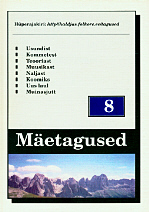Kordo - nõid ja/või prohvet
Kordo. Prophet or Witch
Author(s): Kristi SalveSubject(s): Customs / Folklore
Published by: Eesti Kirjandusmuuseum
Summary/Abstract: The first messages about folk prophets in Estonia date from the 16th century. More plentiful and detailed data can be found since the mid-18th century when the waking movement of the Moravians or United Brethren reached Estonia. The Brethren's congregations had an essential impact on the activities of the prophets of the 18th and early 19th centuries, mostly as a general activator of religion, although in concrete visions and prophesies one could find elements which were alien to the general Lutheran church as well as to the Brethren. Even outright pagan elements occurred. Such distinctions, however, can be made only by a distanced evaluator, for the participants everything formed an integrated whole. Besides the well-known individual prophets, even an extensive prophetic movement, sc. heavengoers, existed in the early 19th century. Literature has also dealt with some earlier, 18th-century prophets. Kordo in the Southeast lived at the end of 19th century. He was critical of the church as well as of the Brethren. He was well known during his lifetime and have survived in people's memory long after their death. Kordo is more a folkloric than a historical figure. The Estonian folk tradition has preserved the memory of many, one could say, one-sided prophets, about whom nothing is remembered but a few obscure predictions. Kordo is a rather versatile character. One the one hand, he is accredited with numerous predictions of future events, which to a great extent coincide with or resemble those attributed to other folk prophets, on the other hand, there are stories which characterise him as a sorcerer, conjurer and practical joker, sometimes also as a fighter for social justice or even as a village fool. On the basis of the varied heritage known about Kordo at present, it could be said that he was everything but an athlete and a healer. He was admired and feared, but he was also sneered at. Oral tradition about him has survived in his home parish and in the neighbouring areas for more than a hundred years after his death, and even this is a noteworthy achievement not attainable for many.
Journal: Mäetagused. Hüperajakiri
- Issue Year: 1998
- Issue No: 08
- Page Range: 58-79
- Page Count: 22
- Language: Estonian

